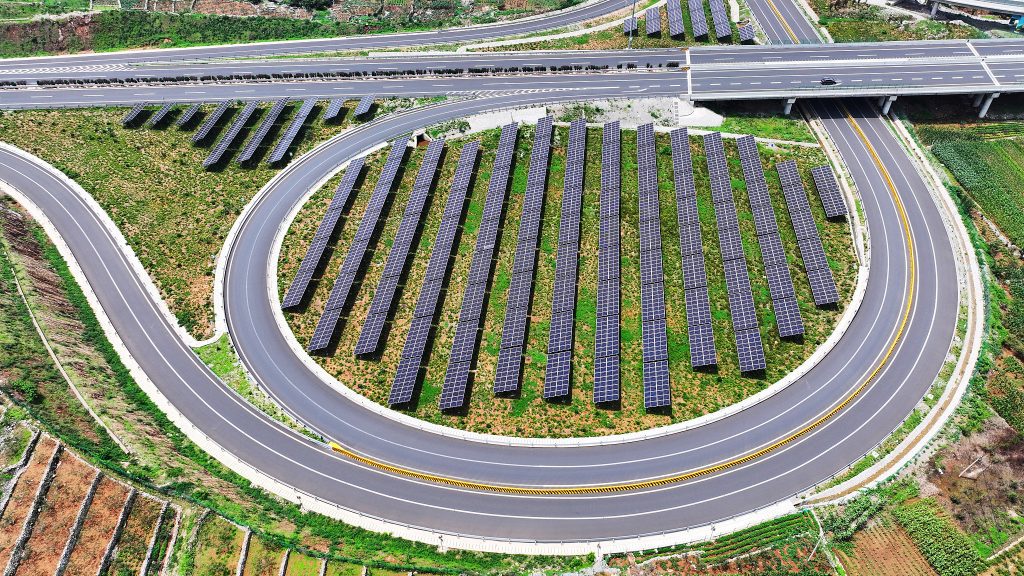China’s Expressways Undergo Green Transformation

Beijing, The Gulf Observer: As China continues to prioritize clean energy development, the nation’s expressways are witnessing a significant green transformation. Along the highway connecting Taiyuan and Xinzhou in Shanxi Province, a vast array of photovoltaic (PV) panels now adorn slopes and rooftops, while electric vehicle (EV) charging stations are becoming a common sight in service areas and at toll booths.
“Ten years ago, EV charging stations in highway service areas were rare, but now they’re almost standard,” remarked Liu Xia, a driver charging her electric vehicle at the highway. She noted the convenience of EVs for long-distance travel, with the expansion of charging infrastructure alleviating concerns about long waits during peak travel times.
The PV system along this highway became fully operational last November and was recently recognized as a national-level smart PV demonstration project by the Ministry of Industry and Information Technology. “The project effectively harnesses idle land and structures for distributed solar energy generation, ensuring a stable electricity supply while reducing carbon emissions,” said Chen Jianwen, the project manager. He emphasized that this initiative serves as a model for the integration of clean energy on highways.
China, a global leader in renewable energy, also boasts the world’s longest expressway network. By the end of June 2024, the country had 24.72 million new energy vehicles (NEVs) on its roads. The integration of highways with the PV sector presents enormous potential for further development.
Earlier this year, the Ministry of Transport issued guidelines encouraging the creation of near-zero-carbon highway service areas and the construction of PV infrastructure. Several provincial regions, including Shanghai, Sichuan, and Hunan, have already unveiled plans to promote PV applications along highways, focusing on scaling up facilities and enhancing energy storage technologies to ensure a stable power supply.
The national agenda also includes advancing other clean energy technologies. Drivers of hydrogen-powered vehicles, for example, have benefited from toll-free highway transit within Shandong Province since the beginning of the year. Sichuan Province is set to follow suit with plans to accelerate the construction of hydrogen refueling infrastructure.
In Shanxi Province, methanol refueling stations have been established along a new highway set to open by the end of this year. Methanol, known for its efficient combustion and clean emissions, is becoming a viable alternative to diesel, particularly in the region’s harsh winter conditions. Li Jianbing, a local driver who switched from a diesel-powered truck to a methanol-fueled vehicle, expressed his satisfaction: “With more methanol refueling stations, travel will be more convenient.”
Da Juxia, a senior engineer at Shanxi Transportation Holdings Group, highlighted the broader impact of these developments: “With continuous infrastructure upgrades along expressways, the clean energy transportation system comprising electric, hydrogen-powered, and methanol-powered vehicles will be further enhanced. This will contribute significantly to China’s dual carbon commitments.”
China has set ambitious goals to peak carbon dioxide emissions before 2030 and achieve carbon neutrality before 2060, marking a steadfast commitment to green and low-carbon development.


